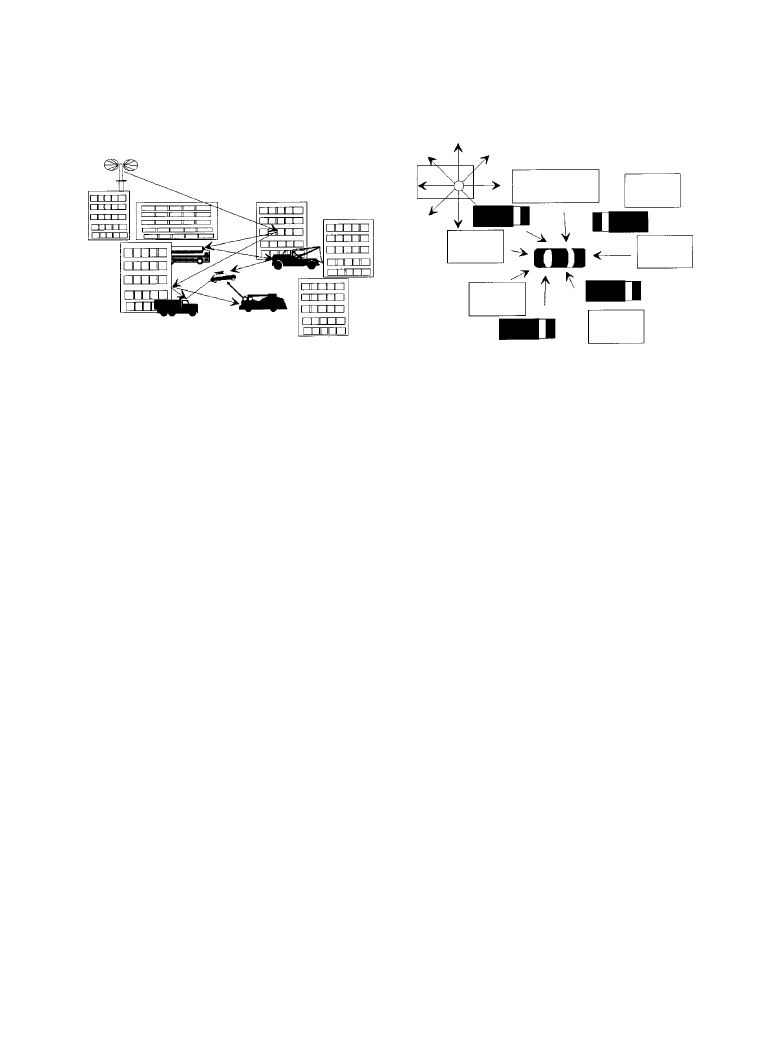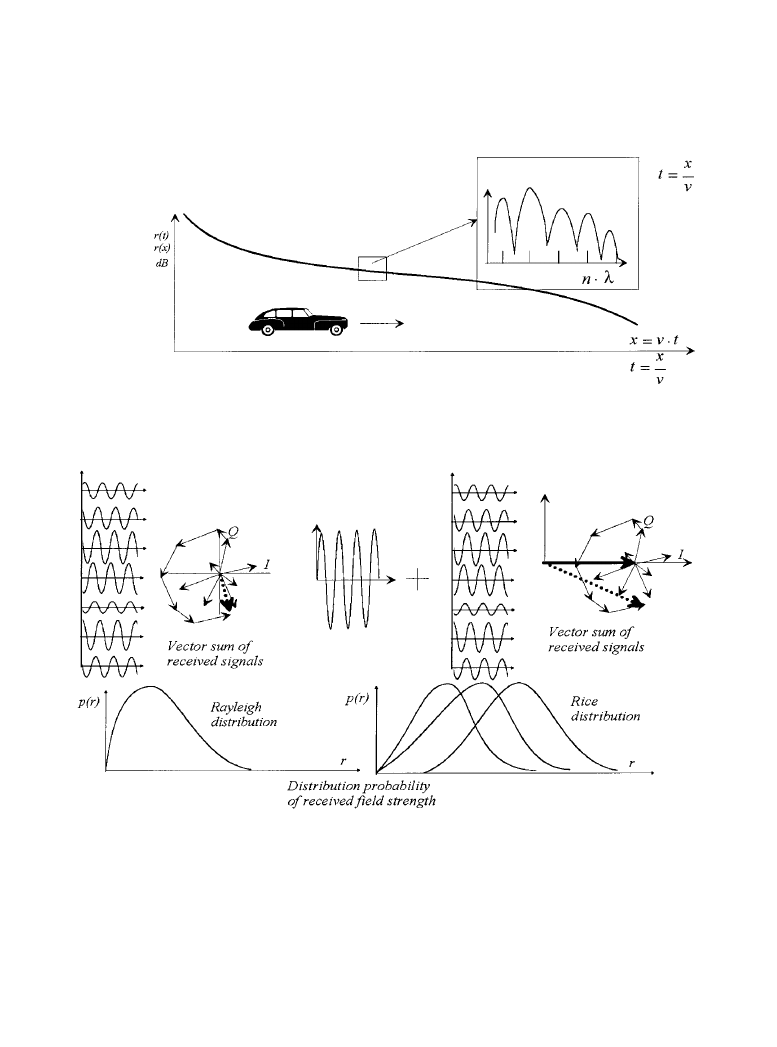ВУЗ: Казахская Национальная Академия Искусств им. Т. Жургенова
Категория: Книга
Дисциплина: Не указана
Добавлен: 03.02.2019
Просмотров: 21619
Скачиваний: 19

12-28 Broadcast Receiver Systems
Nyquist, H.: “Thermal Agitation of Electrical Charge in Conductors,” Phys. Rev., vol. 32, pg.
110, July 1928.
Pleasant, D.: “Practical Simulation of Bit Error Rates,” Applied Microwave and Wireless, pg. 65,
Spring 1995.
Rohde, Ulrich L.: “Key Components of Modern Receiver Design—Part 1,” QST, pg. 29, May
1994.
Rohde, Ulrich L. Rohde and David P. Newkirk: RF/Microwave Circuit Design for Wireless
Applications, John Wiley & Sons, New York, N.Y., 2000.
“Standards Testing: Bit Error Rate,” application note 3SW-8136-2, Tektronix, Beaverton, OR,
July 1993.
Using Vector Modulation Analysis in the Integration, Troubleshooting and Design of Digital RF
Communications Systems, Product Note HP89400-8, Hewlett-Packard, Palo Alto, Calif.,
1994.
Watson, R.: “Receiver Dynamic Range; Pt. 1, Guidelines for Receiver Analysis,” Microwaves &
RF, vol. 25, pg. 113, December 1986.
“Waveform Analysis: Noise and Jitter,” application note 3SW8142-2, Tektronix, Beaverton, OR,
March 1993.
Wilson, E.: “Evaluate the Distortion of Modular Cascades,” Microwaves, vol. 20, March 1981.
Downloaded from Digital Engineering Library @ McGraw-Hill (www.digitalengineeringlibrary.com)
Copyright © 2004 The McGraw-Hill Companies. All rights reserved.
Any use is subject to the Terms of Use as given at the website.
Receiver Characteristics

12-29
Chapter
12.2
The Radio Channel
Ulrich L. Rohde
Jerry C. Whitaker, Editor-in-Chief
12.2.1 Introduction
1
The transmission of information from a fixed station to one or more mobile stations is consider-
ably influenced by the characteristics of the radio channel [1]. The RF signal arrives at the
receiving antenna not only on the direct path but is normally reflected by natural and artificial
obstacles in its way. Consequently, the signal arrives at the receiver several times in the form of
echoes that are superimposed on the direct signal, as illustrated in Figure 12.2.1. This superposi-
tion may be an advantage as the energy received in this case is greater than in single-path recep-
tion. However, this characteristic may be a disadvantage when the different waves cancel each
other under unfavorable phase conditions. In conventional car radio reception this effect is
known as fading. It is particularly annoying when the vehicle stops in an area where the field
strength is reduced because of fading (for example, at traffic lights). Additional difficulties arise
when digital signals are transmitted. If strong echo signals (compared to the directly received
signal) arrive at the receiver with a delay in the order of a symbol period or more, time-adjacent
symbols interfere with each other. In addition, the receive frequency may be falsified at high
vehicle speeds because of the Doppler effect so that the receiver may have problems estimating
the instantaneous phase in the case of angle-modulated carriers. Both effects lead to a high sym-
bol error rate even if the field strength is sufficiently high.
Radio broadcasting systems using conventional frequency modulation are not seriously
affected by these interfering effects in most cases. If an analog system is replaced by a digital one
that is expected to offer advantages over the previous system, the designer must ensure that the
expected advantages—for example, improved audio S/N and the possibility to offer supplemen-
tary services to the subscriber—are not achieved at the expense of reception in hilly terrain or at
high vehicle speeds because of extreme fading. For this reason, a modulation method combined
1. This chapter is based on: Rohde, Ulrich L., and Jerry C. Whitaker: Communications Receiv-
ers: Principles and Design, 3rd ed., McGraw-Hill, New York, N.Y., 2000. Used with permis-
sion.
Downloaded from Digital Engineering Library @ McGraw-Hill (www.digitalengineeringlibrary.com)
Copyright © 2004 The McGraw-Hill Companies. All rights reserved.
Any use is subject to the Terms of Use as given at the website.
Source: Standard Handbook of Audio and Radio Engineering

12-30 Broadcast Receiver Systems
with suitable error protection must be found for mobile reception in a typical radio channel that
is immune to fading, echo, and Doppler effects.
With a view to this design objective, more detailed information on the radio channel is
required. The channel can be described by means of a model. In the worst case, which may be the
case for reception in urban areas, it can be assumed that the mobile receives the signal on several
indirect paths but not on a direct one. The signals are reflected, for example, by large buildings;
the resulting signal delays are relatively long. In the vicinity of the receiver, these paths are split
up into a great number of subpaths; the delays of these signals are relatively short. These signals
may again be reflected by buildings but also by other vehicles or natural obstacles such as trees.
Assuming the subpaths being statistically independent of each other, the superimposed signals at
the antenna input cause considerable time- and position-dependent field-strength variations with
an amplitude obeying the Rayleigh distribution (Figures 12.2.2 and 12.2.3). If a direct path is
received in addition to the reflected ones, the distribution changes to the Rice distribution and
finally, when the direct path becomes dominant, the distribution follows the Gaussian distribu-
tion with the field strength of the direct path being used as the center value.
In a Rayleigh channel the bit error rate increases dramatically compared to the BER in an
AWGN (additive white Gaussian noise) channel (Figure 12.2.4).
12.2.1a
Channel Impulse Response
The scenario outlined in the previous section can be demonstrated by means of the channel
impulse response [1]. Assume that a very short pulse of extremely high amplitude—in the ideal
case a Dirac pulse
δ(t)—is sent by the transmitting antenna at a time t
0
= 0. This pulse arrives at
the receiving antenna direct and in the form of reflections with different delays
τ
i
and different
amplitudes because of path losses. The impulse response of the radio channel is the sum of all
received pulses (Figure 12.2.5). Because the mobile receiver and some of the reflecting objects
are moving, the channel impulse response is a function of time and of delays
τ
i
; that is, it corre-
sponds to
Figure 12.2.1
Mobile receiver affected by fading. (
Courtesy of Rohde & Schwarz.)
Downloaded from Digital Engineering Library @ McGraw-Hill (www.digitalengineeringlibrary.com)
Copyright © 2004 The McGraw-Hill Companies. All rights reserved.
Any use is subject to the Terms of Use as given at the website.
The Radio Channel

The Radio Channel 12-31
(12.2.1)
( )
(
)
h t
a
t
i
i
N
,
τ
δ
τ
=
−
∑
Figure 12.2.2
Receive signal as a function of time or position. (
Courtesy of Rohde & Schwarz.)
Figure 12.2.3
Rayleigh and Rice distribution. (
Courtesy of Rohde & Schwarz.)
Downloaded from Digital Engineering Library @ McGraw-Hill (www.digitalengineeringlibrary.com)
Copyright © 2004 The McGraw-Hill Companies. All rights reserved.
Any use is subject to the Terms of Use as given at the website.
The Radio Channel

12-32 Broadcast Receiver Systems
This shows that delta functions sent at different times t cause different reactions in the radio
channel.
In many experimental investigations, different landscape models with typical echo profiles
were created. The most important are:
Figure 12.2.4
Bit error rate in a Rayleigh channel. (Courtesy of Rohde & Schwarz.)
Figure 12.2.5
Channel impulse response. (
Courtesy of Rohde & Schwarz)
Downloaded from Digital Engineering Library @ McGraw-Hill (www.digitalengineeringlibrary.com)
Copyright © 2004 The McGraw-Hill Companies. All rights reserved.
Any use is subject to the Terms of Use as given at the website.
The Radio Channel